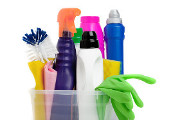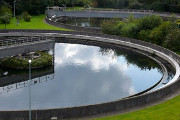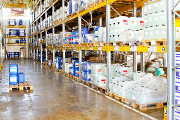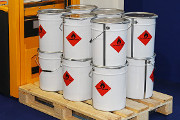The ideal chemical water balance in pools means maintaining pH, alkalinity, chlorine, and stabiliser within an approximate range. The range displayed below is only a rough guideline, and CAUTION MUST BE TAKEN when reading this guideline as the correct balance for your pool may differ depending on a number of factors including (but not limited to) whether it is a Quartzon pool, it has a heat exchanger, and the particular type of pool and set-up. Please always refer to the manufacturers manual and warranty for exact details. If you have any doubts, please feel free to call us for further advice.
pH: 7.0 – 7.4 Fibreglass; 7.4 - 7.8 Plaster, Vinyl, Painted
The pH scale runs from 0 to 14 and is a measure of the acidity or alkalinity of a solution. You will never get the best out of your pool unless the pH is correct.
Chlorine 1 – 2 ppm
Also known as free chlorine. It is formed when Sodium Hypochlorite, Calcium Hypochlorite, Dichlor, or Trichlor are mixed with water and dissociate. This is the main pool water disinfectant.
Free chlorine acts as a sanitizer killing potentially harmful bacteria and micro-organisms.
Useful amounts of free chlorine can only be obtained if the pH is within certain limits, or if the stabiliser level is not too high.
Alkalinity 40 - 80 ppm Fibreglass; 80 – 120 ppm Vinyl, Painted; 150 - 200 ppm Plaster
Closely related to pH, but the two must not be confused. Total alkalinity is a measure of the amount of alkaline materials in the water. This alkalinity will usually be present as bicarbonates.
The relevance to pH is that the amount of alkalinity in the water will determine how easy it is for changes in pH to occur.
Stabiliser 30 – 50 ppm
The chemical name is Cyanuric Acid. Be reassured - Cyanuric Acid is a polymerised urea; it has nothing whatever to do with cyanide or isocyanates. Although it is an organic acid it will not affect the pH of the water when added.
It can be obtained as a granular product in its own right (Pool-Treat Sunscreen). It is also formed when the stabilised chlorines (Dichlor or Trichlor) are dissolved in water - they dissociate into free chlorine and Cyanuric Acid (stabiliser).
Low levels of stabiliser are beneficial because they prevent wastage of free chlorine by the ultra violet waves in sunlight. High levels are a disadvantage because they inhibit free chlorine killing micro-organisms.
Recommendations, suggestions or statements made are intended for the assistance of our customers. They are based upon our experience and judgement but must not be regarded as amounting to a legal warranty or as involving any liability on our part and must be read in conjunction with and subject to our conditions of sale.







